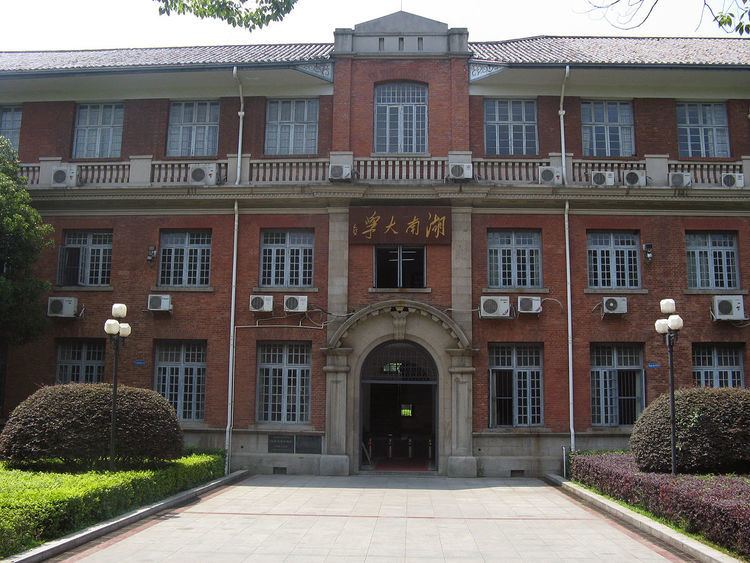Established 976 AD Phone +86 731 8882 2736 Number of students 46,000 | Academic staff 4,600 President Duan Xianzhong Founded 976 AD | |
 | ||
Motto in English Seeking Truth from Facts and Daring to be Pioneers Motto 实事求是 敢为人先 (Seeking Truth from Facts and Daring to be Pioneers) Notable alumni Zhong Zhihua, Ling Jihua, Zhou Xuhong, Geng Tan, Jiang Jianguo Similar Central South University, Hunan Normal University, Southeast University, Huazhong University of Scienc, Chongqing University | ||
Ep 6 hunan university 2017 international students new year party
Hunan University (simplified Chinese: 湖南大学; traditional Chinese: 湖南大學; pinyin: Húnán Dàxué), in Changsha, Hunan province, is one of the oldest and most important national universities in China. Hunan University is a member of Project 985 and Project 211, which are sponsored by the Ministry of Education of China aiming to become a world-class university.
Contents
- Ep 6 hunan university 2017 international students new year party
- Welcome to hunan university of chinese medicine
- History
- Academics and administration
- Notable alumni
- References
Welcome to hunan university of chinese medicine
History
Hunan University traces its history back to the Yuelu Shuyuan Academy founded in 976 AD during the Song Dynasty. Shuyuan were one form of higher learning school in China; another form was government-sponsored schools including imperial central school Taixue or Guozijian and regional schools. The Yuelu Academy was a venue for Chinese scholars and their students to meet and study deep issues in broad areas of Confucian Studies.
In 1903 it was changed to be a modern school with the incorporation of the school which was founded in 1897, initially called Shiwu Xuetang and in 1903 called Hunan Institute of Higher Learning. The school name Hunan University was proposed in 1912, and in 1926 Hunan University was formed with the merger of three specialized public schools of Hunan. It was renamed Central-South Institute of Civil Engineering in 1937 and then Hunan Polytechnic College. The name Hunan University was again adopted in 1949.
The calligraphy of "Yuelu Academy" was written by Emperor Zhenzong of Song in 1015, and the calligraphy of "Hunan University" was written by Mao Zedong in 1950 as soon as the People's Republic of China was founded.
For more than 1000 years, academic and educational activities have continued uninterrupted here. In the course of its development from Yuelu Academy to Hunan University, this time-honored institution has committed itself to fostering people of great talent for society and has produced large numbers of figures of outstanding scholarship.
Among its prominent students are Wang Fuzhi, a celebrated philosopher in Chinese history; Wei Yuan, a reformist who first advocated the idea of learning from the West; Zeng Guofan, the first Chinese to initiate the Modernization Movement (at the time called Yangwu Yundong, movement to emulate overseas sci-tech and industry) and to make arrangements for a modern factory in China; Zuo Zongtang, a national hero who arranged to build China’s first navy and took great pains to defend and develop Xinjiang; Guo Songtao, China’s first ambassador to a foreign country; Cai E, a major leader in defending the Republic of China; the first Chinese to set foot on the continent of Antarctica; and Ci Yungui, the chief designer of China's first super computer.
Hunan University is one of the most prestigious public research university in People's Republic of China. Its Chemistry, Civil Engineering, Mechanical Engineering, Environmental Engineering, Industrial Design and International Trade programs are some of its strongest.
The 2008 Times Higher Education Supplement (THES) World University Rankings ranked Hunan University as 15th in the People's Republic of China.
Academics and administration
The administration is led by a CPC secretary and a president. The current secretary is Jiang Changzhong and the president is Duan Xuangzhong.
The college is part of the 211 Project and Project 985.
It has the following colleges and departments:
